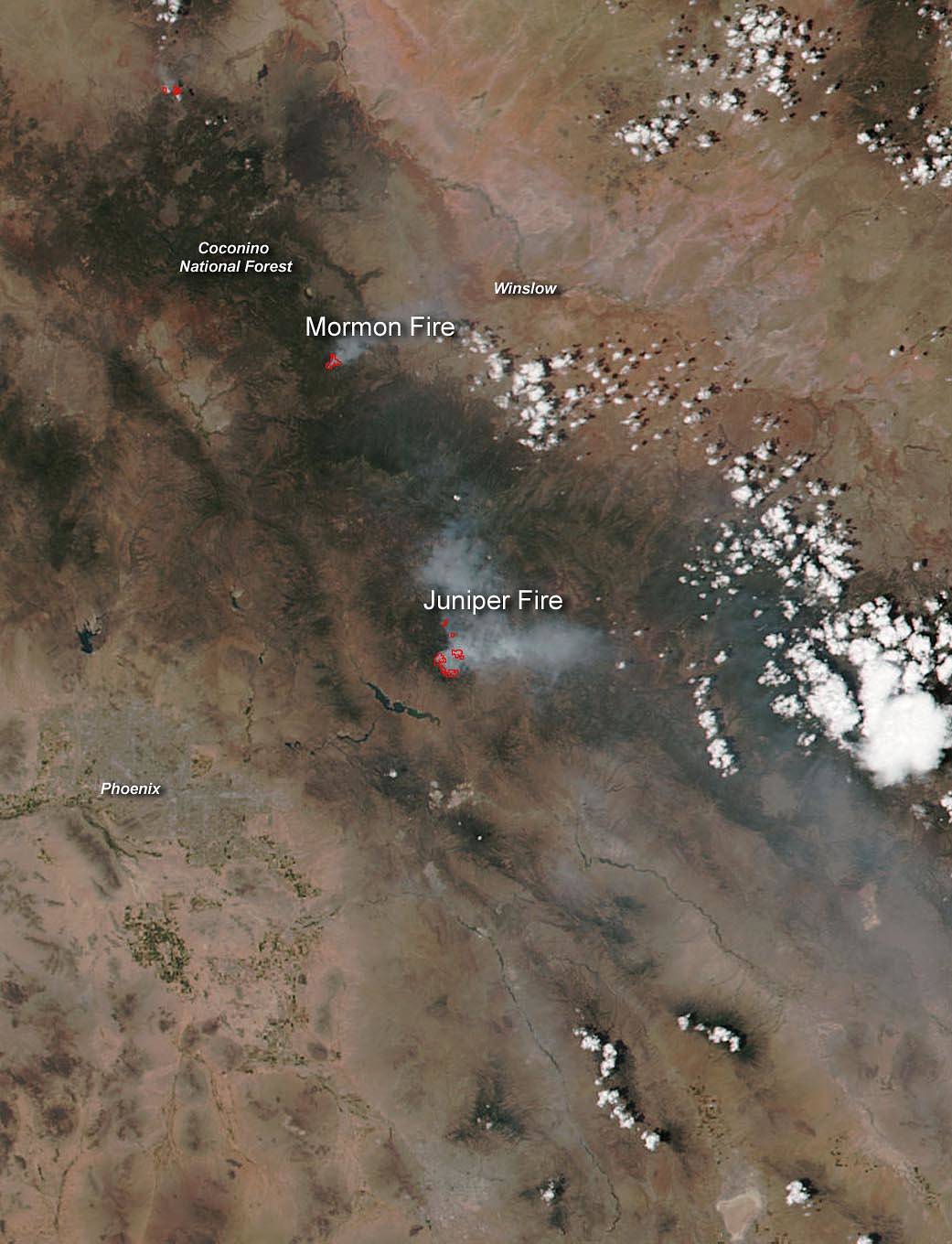
According to Inciweb: “Fire managers with the Coconino National Forest are utilizing two recent lightning-caused fires to benefit the landscape and maintain a healthy ecosystem by allowing fire to fulfill its natural role in the environment. The forest thrives on fires such as these that are low severity and creep across the forest floor. They reduce fuels and the risk of severe wildfire, create safer conditions for residents, the public and firefighters, and also restore wildlife habitat by stimulating understory vegetation growth.
“The Mormon fire is located approximately 6 miles east of Munds Park near Mormon Mountain. This low-intensity wildfire is being managed to achieve multiple benefits and objectives. It will increase in size as time goes on, and firefighters will be conducting burnout operations to facilitate where and how the fire moves through the landscape. Smoke will become more noticeable, but will still be much lighter than that of a severe wildfire. Fire managers will closely monitor smoke impacts to communities.
“The Mormon fire is not a prescribed burn. This wildfire will be managed where needed and allowed to function as nature intended. This means it does not have a planned end date, but fire managers have carefully determined the perimeters within which the fires may run their natural course. Ultimately, fire will eventually treat portions, or all of, the land inside the perimeters.”
As for the larger Juniper Fire, the Inciweb reports: “The Juniper Fire is located approximately 10 miles south of the town of Young, Arizona. This fire has burned at a low intensity for the last three weeks in a mosaic pattern, effectively treating over 18,000 acres of forestland while achieving multiple benefits and objectives. It will increase in size as time goes on, and firefighters will be conducting burnout operations to facilitate where and how the fire moves through the landscape. The Juniper Fire is being managed to provide firefighter and public safety while allowing opportunities to reintroduce fire to the Sierra Ancha Mountains. This means it does not have a planned end date, but fire managers have assessed the perimeters within which the fire may run its natural course. Ultimately, fire will eventually treat portions, or all of, the land inside the perimeters.”
On June 6, 2016, fire managers conducted a community meeting regarding the Juniper Fire due to shifting winds which brought strong southwesterly winds into the area. 10 to 15 mph winds with up to 30 mph gusts had the potential to increase fire behavior with resulting smoke visible for long distances. Fire managers closely monitored the smoke impacts to communities.
The Suomi NPP satellite is a joint mission between NASA, NOAA and the U.S. Department of Defense.
NASA image courtesy Jeff Schmaltz, MODIS Rapid Response Team. Caption: NASA/Goddard, Lynn Jenner

























